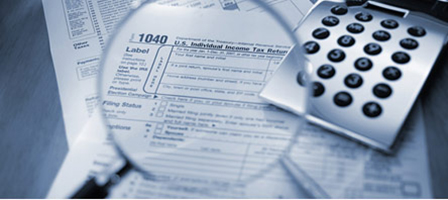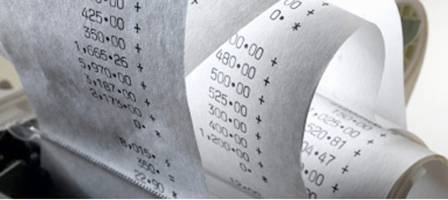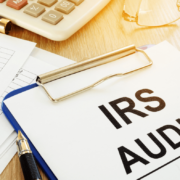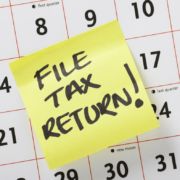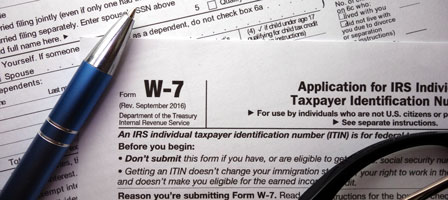Were You Affected by a Disaster Loss? You Need These Tax Tips
- Learn how the IRS treats disaster losses.
- Get new filing due dates.
- Discover extended tax deadlines for those affected by Hurricane Ida.
- Learn about tax relief for those affected by the California wildfires.
- Get more information about when you should elect to take the loss deduction.
- Find out what to do if you have a net operating loss for the year.
- Learn about the possible gains of a disaster loss.
With the wildfires in the west, hurricanes, and flooding in the southeast, and eastern seaboard, we have had several presidentially declared disaster areas this year. Fiducial suggests you use the FEMA site to determine if you reside within a federally declared disaster area. You can also use the Address Look-Up provided by the Federal government. If you suffered a disaster loss, read on for important tax-related information.
Disaster areas of 2021
Those in one of the disaster areas are eligible for a variety of tax benefits. Of immediate concern is avoiding penalties for not meeting your tax filing obligations. A federal disaster declaration extends many federal tax filing deadlines and are different for each disaster. For example, here are the extended due dates for those impacted by Hurricane Ida and the CA wildfires:
Ida
This area includes the entire state of Louisiana. However, taxpayers and businesses in Ida-impacted localities designated by FEMA in neighboring states will automatically receive the same filing and payment relief. Thus, the IRS extended any federal due date beginning August 13 to Jan 3, 2022.
For example, those with a valid 1040 extension to October 15, 2021, now have until Jan 3, 2022, to file their returns. The IRS noted, however, that because tax payments related to these 2020 returns were due on May 17, 2021, those payments are not eligible for this relief.
The Jan. 3, 2022, deadline also applies to quarterly estimated income tax payments due on Sept. 15, 2021, and the quarterly payroll and excise tax returns normally due on Nov. 1, 2021. It also applies to tax-exempt organizations, operating on a calendar-year basis, that had a valid extension due to run out on Nov. 15, 2021.
Businesses with filing extensions also have additional time. This includes, among others, calendar-year corporations whose 2020 extensions run out on Oct. 15, 2021.
In addition, penalties on payroll and excise tax deposits due on or after Aug. 26 and before Sept. 10, will be abated as long as the deposits are made by Sept. 10, 2021.

CA Wildfires
The IRS announced tax relief for individuals and households affected by wildfires that reside or have a business in Lassen, Nevada, Placer, and Plumas counties. The declaration permits the IRS to postpone certain tax filing and tax-payment deadlines for taxpayers who reside or have a business in the disaster area. For instance, the IRS has postponed certain deadlines falling on or after July 14, 2021, and before November 15, 2021, through November 15, 2021.
Unlike Hurricane Ida, the wildfires are an ongoing disaster. Other areas experiencing major fires may also qualify for tax postponements. So, visit the IRS website for the latest California wildfire relief.
The IRS automatically identifies taxpayers located in the covered disaster area and applies filing and payment relief. Are you an affected taxpayer who resides or has a business located outside the covered disaster area? Then you should call the IRS disaster hotline at 866-562-5227 to request this tax relief.
Disaster loss and tax deductions
Were you an unlucky victim and suffered a loss because of a disaster? Then you may be able to recoup a portion of that loss through a tax deduction. If the casualty occurred within a federally declared disaster area, you can elect to claim the loss deduction in one of two years: the tax year in which the loss occurred or the immediately preceding year.
By taking the deduction for a 2021 disaster area loss on the 2020 return, you may be able to get a refund from the IRS before you even file your tax return for 2021, the loss year. You have 6 months after the original due date of the 2021 return to file an amended 2020 return to claim the disaster loss.
Generally, this will be October 15, 2022. Before making the decision to claim the loss in 2020, you should consider which year’s return would produce the greater tax benefit, as opposed to your desire for a quicker refund.
If you elect to claim the loss on either your 2020 original or amended return, you can generally expect to receive the refund within a matter of weeks. This can help to pay some of your repair costs. However, at the present time, the IRS is still trying to catch up on a huge backlog of returns and correspondence that resulted from COVID-19 shutdowns of the IRS in 2020. So, even the processing of disaster loss returns may take longer than usual.
Net operating loss
If the casualty loss, net of insurance reimbursement, is extensive enough to offset all the income on the return, and results in negative income, you may have what we refer to as a net operating loss (NOL). Because tax reform changed how NOLs are treated after 2020, your decision whether to claim the loss in the current year or the prior year will have significant tax ramifications.
Claimed in 2020
If you claim the loss in 2020 and it results in an NOL, that NOL carries back five years. Additionally, any unused balance then carries forward indefinitely. Meaning if the loss results in a negative 2020 income, the NOL deduction can be carried back to your 2015 return. Any loss not used up on your 2015 return will be carried forward to 2016, then 2017 and so forth. The way this is done is by amending the returns from the prior years that have already been filed.
Claimed in 2021
Tax reform changed the treatment of NOLs. As a result, no longer is an NOL deduction carried back to prior years. Instead, the loss is only carried forward to the future years’ returns. In addition, NOLs occurring in 2021 and subsequent years can only offset 80% of a subsequent year’s taxable income.
Determining the more beneficial year in which to claim the loss requires a careful evaluation of your entire tax picture for multiple years. You will need to look at filing status, amount of income and other deductions, and the applicable tax rates. The analysis should also consider the effect of a potential NOL.
Qualified disaster losses resulting from major disasters are deductible only to the extent they exceed $500. For verification purposes, keep copies of local newspaper articles and/or photos that will help prove that your loss was caused by the specific disaster.
Unexpected gains from disaster loss
As strange as it may seem, a disaster loss might result in a gain. This sometimes occurs when insurance proceeds exceed the tax basis of the destroyed property. When a gain materializes, there are ways to exclude or postpone the tax on the gain.
Do you need further information on disaster losses or your options for claiming the loss? Want to amend your 2020 return to claim your 2021 disaster loss? Call Fiducial at 1-866-FIDUCIAL or make an appointment at one of our office locations to discuss your situation.
Ready to book an appointment now? Click here. Know someone who might need our services? We love referrals!
For more small business COVID-19 resources, visit Fiducial’s Coronavirus Update Center to find information on SBA loans, tax updates, the Paycheck Protection Program, paid sick and family leave.


